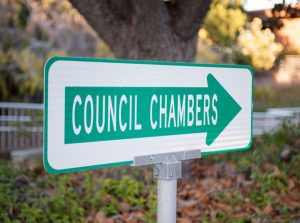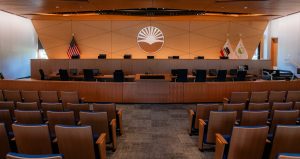To those who thought that “citizen commissioners” would draw fairer electoral districts than elected officials, the August 15 report from the California redistricting commission (wedrawthelines.ca.gov) was a rude awakening.
It turns out that the difference between election districts created by appointee commissioners and those designed by elected officials is that politicians’ motives are easier to understand: advancing their own or their party’s chances of winning elections.
The California redistricting commission’s reasoning, on the other hand, is hard to decipher – except, perhaps, as further dismaying evidence of what happens when you take geography out of secondary school curriculums.
The 14 member committee – eight of whom are from Southern California, and none of whom are from Santa Clara County – puts Santa Clara into congressional, and state senate districts with East Bay cities. About the only thing that can be said for the plan is that it does unify all of Santa Clara into single congressional and state senate and assembly districts.
Santa Clara’s new congressional district, CD 17, extends from Alameda County into Santa Clara County; including Newark, Fremont, Cupertino, Sunnyvale and parts of San Jose. The city’s new assembly district, AD 25, covers Newark, Milpitas, San Jose’s Berryessa neighborhood, and parts of Fremont. The new senate district, SD 10, reaches even further afield, marrying Santa Clara to Alameda county cities Castro Valley and San Ramon as well as Milpitas, Fremont, Newark and Berryessa.
The commission explains these puzzling groupings in the following way: “The district contains cities and local communities of interest marked by several shared interests, including employment and business based on high technology economies and demographic characteristics linked by income level, housing, and immigration status.”
Compare this with the rationale for CD 18, which reaches from San Mateo south to Los Gatos, and west to Santa Cruz. “Areas within the district share common social and economic characteristics based on income level and reliance on high technology economies, as well as interests in open space and environmental concerns.”
Some see snobbery in this. “The commission has paid too much attention to keeping upscale, coastal districts around Los Angeles intact,” Jackie Dupont-Walker of the African American Redistricting Collaborative told the San Francisco Chronicle.
The only geographic feature of the Bay Area appearing to concern the commission in any substantive way was whether the Golden Gate Bridge should be a “hard line when drawing the region’s districts.”
The City of Santa Clara isn’t alone in questioning the fairness of the redistricting.
The day the commission released the final maps the California Republican party told the AP it was backing a 2012 ballot challenge to the new districts. The same day the Mexican American Legal Defense and Educational Fund told the LA Times that it is considering a court challenge.
The National Association of Latino Elected and Appointed Officials (NALEO) said in a press release that the redistricting “significantly weakens the voice of the Latino community in the San Fernando Valley and Orange County” and the group is determining if “litigation is warranted.”
Last month the San Francisco Chronicle reported that leaders of California’s African American community were troubled by the commission’s plans. “I have some concerns that the black representation in southwest Los Angeles, the Inland Empire and even the East San Francisco Bay could be threatened,” state Sen. Curren Price and chair of the Legislative Black Caucus told the Chronicle.
The California Supreme Court is bracing for a wave of litigation, launching a dedicated website (www.courts.ca.gov/redistricting.htm) for filing legal challenges to the new maps. The filing deadline is Sept. 29, 2011.
Carolyn Schuk can be reached at cschuk@earthlink.net.











0 comments